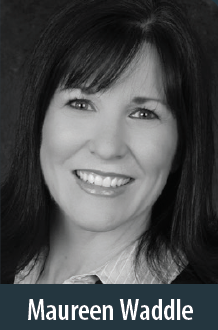
Staffing a practice with a suitable number of employees can be one of the most effective investments a physician owner can make, but it is also one of the most expensive. “Gross wages usually account for about 25% of practice revenues, so it’s important to pay careful attention to this expense,” says Maureen Waddle, principal and senior consultant, BSM Consulting, Incline Village, Nevada. “By the same token, appropriate staff support enhances a physician’s ability to generate revenue, so being adequately staffed is critical.”


Determining the optimal level of staffing requires analyzing the performance of each and every phase of the practice, according to Ron Rosenberg of Practice Management Resource Group, Pinole, California. “When evaluating overhead in general and staffing levels and cost in particular, the easiest way to reduce the effective overhead rate is to increase income rather than reduce costs,” he says. “In fact, cutting costs can be counterproductive and actually decrease profitability.”
DEFINE ADEQUATE
In a service economy such as the one that drives competition today, staff members are among the most important assets, but having too many staffers is as big a mistake as having too few. Mr. Rosenberg points out that too many simply costs more overhead but is far less costly in the long run than too few. Why?
AT A GLANCE
• Determining the appropriate and optimal level of staffing requires analyzing the performance of each and every phase of the practice.
• The practice should determine its average income per patient and calculate how may additional patients an added technician will allow.
• Benchmarks for measuring staffing productivity and efficiency can be used as guidelines, but applying such formulas is not always effective. Some consultants prefer to base staffing needs on a practice’s volume of patients rather than its number of providers.
“Too few staff on the clinical side will yield long wait times and dissatisfied patients,” he says. “Too few staff at the front desk will again lengthen wait times and decrease patient[s’] satisfaction. Finally, understaffing the business office will yield undercollection of claims and perhaps the largest revenue loss from improper staffing.”
When the question of whether or not a technician should be added arises, Mr. Rosenberg suggests that “the practice should determine its average income per patient and calculate how many additional patients the added technician will allow. The calculation will generally show that being able to add … one or two patients per day will pay for the technician and [that] every additional patient will be ‘profit.’” Similarly, he says, “When assessing the number of billers, the key consideration will be whether all of the required work to collect a level of income appropriate to the services being provided can be accomplished. The cost of having the billing office understaffed will impact income far beyond the cost of an additional biller.”
WHAT ABOUT BENCHMARKS?
There are various factors to consider when determining the appropriate number of staffers. They include volume of patients, specialty, and the use of technology. Ms. Waddle explains, “Benchmarks for staffing rely on the use of FTEs [full-time equivalents]. To calculate full-time–equivalent employees (because some work part time, and some work overtime), take the total hours paid for the year for all staff (excluding employed providers), and divide by 2,080, which is one full-time person’s annual hours. Determining the FTE for providers is a little challenging, because many do not work 5 days per week, yet on the days that they work, they often work 10 to 12 hours. Furthermore, few providers track their hours. The American Academy of Ophthalmology hosts an annual benchmarking survey. It defines an FTE provider as one who works 180 days per year, including clinic and surgery days. To ascertain the FTE for providers, take the total provider days worked, and divide by 180. The next step is to calculate the final benchmark. Divide the FTE staff members by the FTE providers. The benchmarking range (25th to 75th percentile) is four to eight FTE staff members per FTE provider.”
Although benchmarks for measuring staffing productivity and efficiency can be used as guidelines, Ms. Waddle notes that applying such formulas is not always effective. “Despite the fact that we have benchmarks for employees per physician, I do not believe this is the best way to plan a staffing model,” she says. “This is for several reasons, including the fact that different subspecialties require different support. For instance, glaucoma and retina specialists order far more diagnostic tests than general ophthalmologists, and optometrists generally perform longer routine exams and do not require as much technical support.”

Ms. Waddle prefers to base staffing needs on a practice’s volume of patients rather than its number of providers, and she is not the only fan of this strategy. Jane T. Shuman, president, Eyetechs, Needham, Massachusetts, says the number of clinical staff should be based primarily on the number of patients seen per doctor per day. “Included in this is how many diagnostic tests are to be performed and if scribes are used,” she explains. “According to the American Society of Ophthalmic Administrators Technician Benchmarking study of 2009 and the follow-up study in 2015 that considered the utilization of electronic medical records, each technician should be able to work up 3 to 3.5 patients per hour, based on a balanced schedule combination of long and short exams.” Technicians in some subspecialties such as retina and oculoplastics, Ms. Shuman explains, may be able to work up more each hour.
One of the most common mistakes with respect to staffing is automatically adding technicians when a new provider joins the practice. Ms. Shuman recommends first re-evaluating the productivity of the current staff. “There may be an opportunity to cross-train staff to work for all doctors or add part-timers instead of full-time staff,” she says. Another misstep is to add people to the payroll because employees complain that they are overworked and need help. “Instead, it may be possible to streamline the current processes, allowing the staff to work smarter, not harder.”




